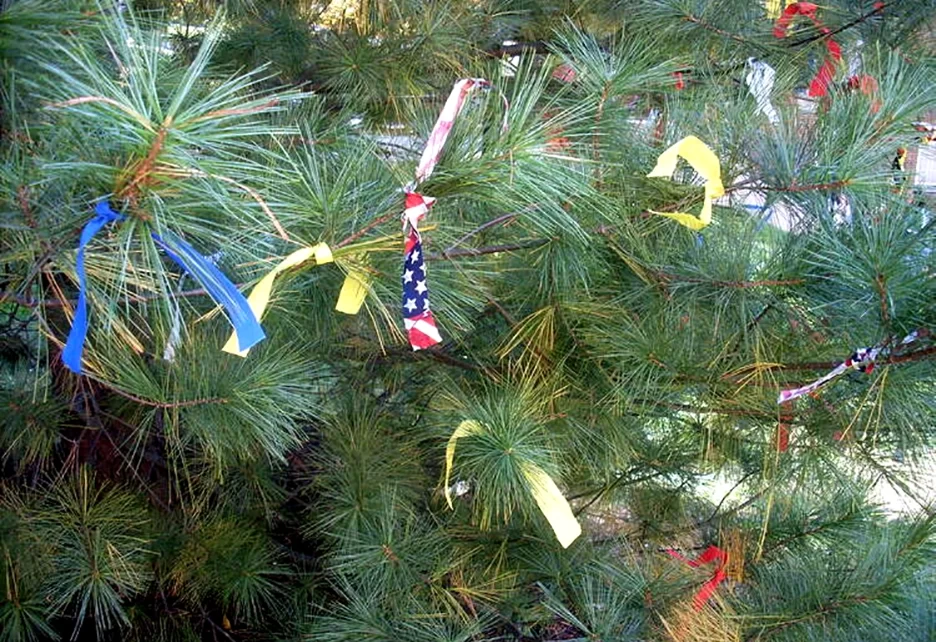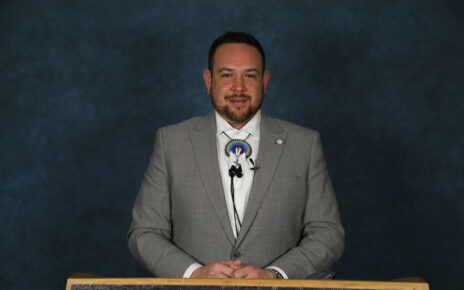September 8, 2022 | eberly.wvu.edu
MORGANTOWN, W.Va. — The West Virginia University Native American Studies Program held its annual Peace Tree Ceremony Wednesday, September 21 at the WVU Peace Tree.
Marie Watt, an American artist and citizen of the Seneca Nation with German-Scot ancestry, was the guest of honor. Watt is a nationally renowned contemporary artist whose work is collected by major institutions including the Whitney Museum of American Art and the Metropolitan Museum of Art in New York City. She was welcomed by the Native American Studies Program in collaboration with the Art Museum of WVU.
This year’s ceremony marked the 30th anniversary of the planting of WVU’s first peace tree by Chief Leon Shenandoah, Tadodaho of the Grand Council of the Haudenosaunee Six Nations Iroquois Confederacy.
John Block, a traditional singer from the Seneca Nation also participated in the ceremony. Katie Fallon, director of the Avian Conservation Center of Appalachia, Inc., presented Canaan, a red-tailed hawk, to symbolize the eagle the Peacemaker placed as a sentry at the top of the original tree ca. 1,000 years ago. Guests were invited to add a prayer tie, with any good intention they choose, to the Peace Tree.

After the Peace Tree Ceremony, Watt gave a public presentation. Her talk was titled, “A Shared Horizon (Western Door)”. The Seneca are the westernmost of the Six Nations, Haudenosaunee (Iroquois) Confederacy and known as the “keeper of the western door.”
Watt’s evening talk was a hybrid event and was also available via livestream.
Watt visted the campus September 20–23 at the Art Museum of WVU while working with the WVU School of Art and Design on collaborative printmaking projects. Her exhibition, Storywork: The Prints of Marie Watt, from the collections of Jordan D. Schnitzer and his family foundation, is on display at the Museum through Dec. 11, 2022.
“Given the profound ways that artists’ works stimulate introspection and can spark dialogs that promote cross-cultural peace and understanding, we are truly honored to collaborate with the Art Museum to welcome Marie Watt and celebrate her incredible talent,” said Bonnie Brown, coordinator of the Native American Studies Program.
Watt’s interdisciplinary work draws from history, biography, Iroquois protofeminism and Indigenous teachings; in it, she explores the intersection of history, community and storytelling. Through collaborative actions, she instigates multigenerational and cross-disciplinary conversations that open ways for understanding connectedness to place, to one another and the universe.
Additional support for Watt’s visit came from the Carolyn Reyer Visiting Lectureship Program for Native American Studies, the Judith Gold Stitzel Museum Education Fund, Eberly College of Arts and Sciences and the WVU Division of Diversity, Equity and Inclusion
The Peace Tree tradition, per Haudenosaunee (Iroquoian) oral history, centers on the Creator sending the Peacemaker to unite the warring Seneca, Cayuga, Onondaga, Oneida, and Mohawk nations. He planted the original white pine Tree of Peace at Onondaga to symbolize these Five Nations forming the Haudenosaunee Confederacy. It was later Six Nations, with the addition of the Tuscarora.
“The WVU Peace Tree ceremony provides an opportunity for the University, the local community, and individuals to commit to peacemaking and problem-solving,” said Brown.




